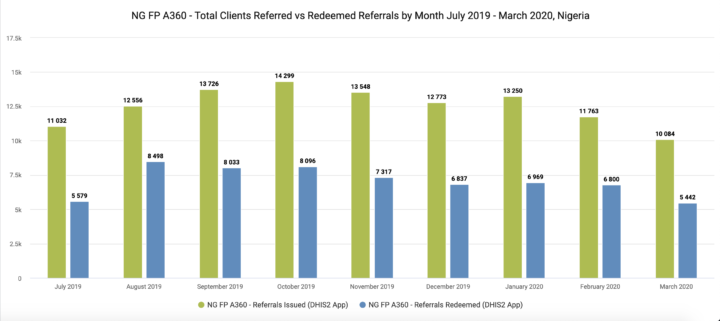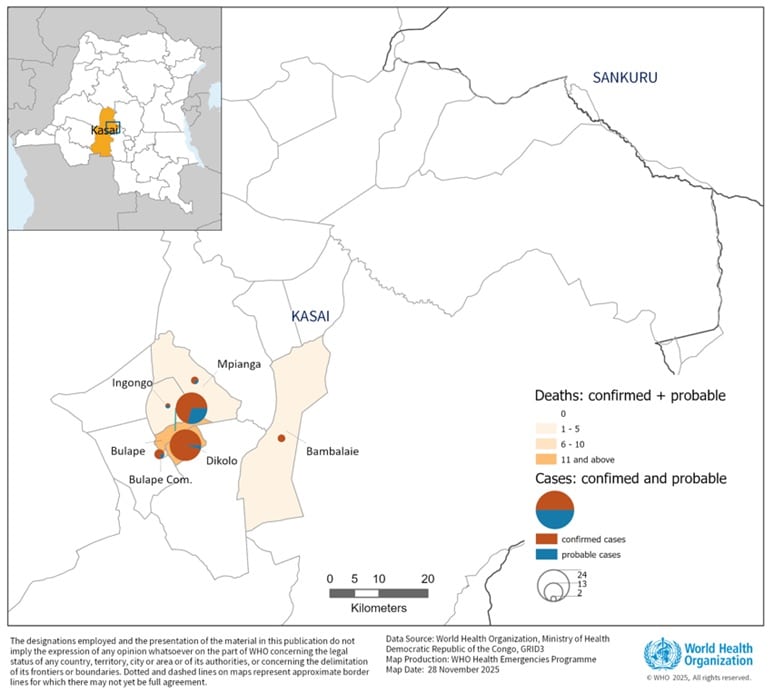Using DHIS2 Android App to Support Reproductive Health in Nigeria
The DHIS2 Android Capture App is used in the PSI Adolescents 360 project to support contraceptive uptake in Nigeria’s public health sector
Monitoring Matters in Reproductive Health
Reproductive health projects need to monitor efforts in demand creation and point of care service provision to increase access and plan for tailored service delivery. Without digital tools, this monitoring activity requires an intense effort and poses several operational challenges, such as data quality and management of client referrals. That’s where DHIS2–and the DHIS2 Android Capture App–can make a difference.
Population Services International (PSI) and the Society of Family Health (SFH) in Nigeria implement Adolescents 360 (A360), a youth contraceptive program that serves adolescent girls age 15-19 across the country’s public health sector. As one of the earliest organizations to adopt the open-source DHIS2 software, PSI has effectively used the DHIS2 Android Capture app to monitor client mobilization and service provision in a variety of projects around the world, and was well prepared to implement the app in Nigeria to help the A360 project achieve its goals.

A360: Challenges, Goals, and Solutions
A360 aims to raise the demand for and the voluntary uptake of modern contraceptives among married girls aged 15-19, using different approaches depending on local context and target audiences, such as using a maternal and child health program to encourage young women and their husbands to participate in contraceptive counseling, or involving unmarried girls in forums where they gain skills and knowledge about their health and their lives. The project, co-funded by the Bill and Melinda Gates Foundation and the Children’s Investment Fund Foundation, works alongside young people and diverse experts to design and implement adolescent reproductive health programs.

Before the adoption of DHIS2, client mobilization and service provision reports were recorded in paper-based tools, compiled in regional spreadsheets, and uploaded into online shared files. This system made it difficult to bring together data from eight states onto one platform, and for decision makers to access data promptly and make programmatic decisions.
To address these substantial reporting and data quality challenges, the A360 project decided in early 2019 to adopt DHIS2 for routine monitoring. In addition to improving data quality and data use, the project team was keen on introducing mobile data collection to streamline data flows, enhance the timeliness of reporting, and benefit from the more advanced analytical functionality available in DHIS2.
Implementing DHIS2 Android App to Improve Reporting and Service Delivery
Following an initial assessment and critical consideration of the project settings in February 2019, the DHIS2 implementation process began. PSI and SFH designed modules for monitoring client mobilization and service provision using the DHIS2 Android Capture app. A total of fifteen regional teams and 600 field staff were trained on use of the DHIS2 Android Capture App. The team pursued its pilot phase from May-June 2019, followed by a scale-up period during which the project fully transitioned from paper to mobile DHIS2 in July 2019.
The configuration is composed of a series of single Event Programs, which are divided into sections that include program rules to aid quick navigation and enforce data quality checks during event capture:
- Community Mobilization to record client’s mobilization and referral information among the unmarried girls,
- Male IPCA Session Attendance to record client mobilization and referral information among the married girls,
- Attendance and Service Log for client registration, attendance and point of care service provision.
More than 600 field and project staff were trained on the use of the DHIS2 Android Capture App, and the tool has been rolled out in more than 206 public health facilities across 8 states in the northern and southern parts of Nigeria. Field staff access the DHIS2 Android Capture app from smartphones to monitor and submit live reports and clients are mobilized by the IPCAs of the project. who record mobilization statistics. Service providers use paper registers to record client visits, while program assistants report the service provided using the DHIS2 Android Capture App.

Results: Streamlined Data Flow, Improved Efficiencies, Better Data Use
Following the adoption of the DHIS2 Android Capture app was a streamlined data flow, improved efficiencies, data quality, and data use in general. In 2019, the project completed an average of 661 client mobilization and 8,526 service provision reports monthly. This translates to 33 mobilization and 426 service reports completed daily and submitted through the DHIS2 Android Capture App. These reports are completed in a timely manner and routinely verified before synchronization with the DHIS2 database. The project team monitors the overall project performance routinely enabled by DHIS2 analytics and dashboards, which has contributed not only to improvements in reporting, but also in decision making, as the data visualizations and analytics help inform continuous program implementation and adaptations.
Join the discussion of Nigeria’s Adolescents 360 project on the DHIS2 Community of Practice
Download the full project report from PSI


